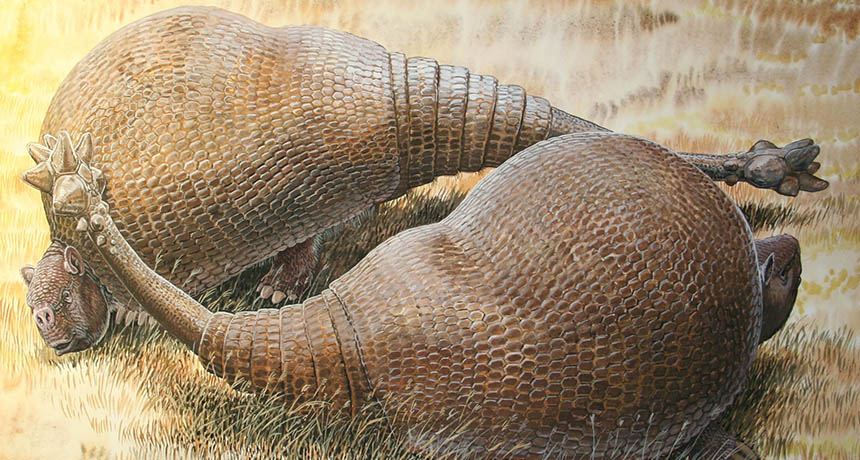Surprise! Ancient armadillos are related to modern armadillos

Ancient glyptodonts, illustrated above, looked a lot like modern armadillos. That’s probably because they’re genetically related, researchers report.
Peter Schouten

Ancient glyptodonts, illustrated above, looked a lot like modern armadillos. That’s probably because they’re genetically related, researchers report.
Peter Schouten